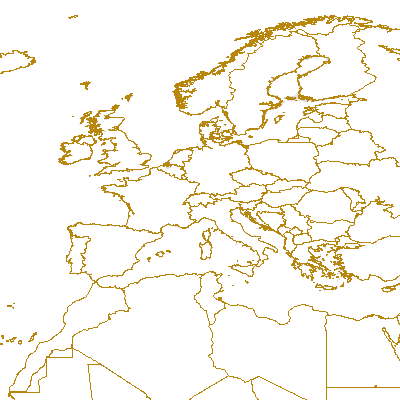European Topic Centre on Terrestrial Environment (ETC-TE)
Type of resources
Topics
INSPIRE themes
Keywords
Contact for the resource
Provided by
Years
Formats
Representation types
Scale
Resolution
-

Complete Coastline Features for all the countries that produced Corine Land Cover 2000 and have a coastline, with detailed descriptions on the environment and type of coastal areas. Each coast segment has inherited CLC 2000 class, and also the attributes from Eurosion Coastline version 2.1 2004, regarding geomorphology, type of coast and erosion trends.
-

This layer defines homogeneous areas as function of height, slope and distance to the sea. The Elevation Breakdown is used to allocate Land Cover Changes into homogeneous areas as function of height, slope and distance to the sea. It defines five relief typologies: 1) Low coasts, 2) High Coasts, 3) Inlands, 4) Uplands and 4) Mountains. The previous enumeration corresponds to values in the grid.
-

The current dataset is a combination of SRTM 90 and DTED data. The Shuttle Radar Topography Mission (SRTM) obtained elevation data on a near-global scale to generate the most complete high-resolution digital topographic database of Earth. SRTM consisted of a specially modified radar system that flew onboard the Space Shuttle Endeavour during an 11-day mission in February of 2000. SRTM is an international project spearheaded by the National Geospatial-Intelligence Agency (NGA) and the National Aeronautics and Space Administration (NASA). Version 2 of the Shuttle Radar Topography Mission digital topographic data (also known as the "finished" version). was used for generation of this dataset. Version 2 is the result of a substantial editing effort by the National Geospatial Intelligence Agency and exhibits well-defined water bodies and coastlines and the absence of spikes and wells (single pixel errors), although some areas of missing data ('voids') are still present. The Version 2 directory also contains the vector coastline mask derived by NGA during the editing, called the SRTM Water Body Data (SWBD), in ESRI Shapefile format. DTED (or Digital Terrain Elevation Data) was originally developed in the 1970s to support aircraft radar simulation and prediction. DTED supports many applications, including line-of-sight analyses, terrain profiling, 3-D terrain visualization, mission planning/rehearsal, and modeling and simulation. DTED is a standard NGA product that provides medium resolution, quantitative data in a digital format for military system applications that require terrain elevation. The DTED format for level 0, 1 and 2 is described in U.S. Military Specification Digital Terrain Elevation Data (DTED) MIL-PRF-89020B, and amongst others describe the resolution: Level 0 used for geneation of this dataset has a post spacing of 30 arcseconds in latitude direction (ca. 900 meters)
 RUC Geo-Data catalogue
RUC Geo-Data catalogue